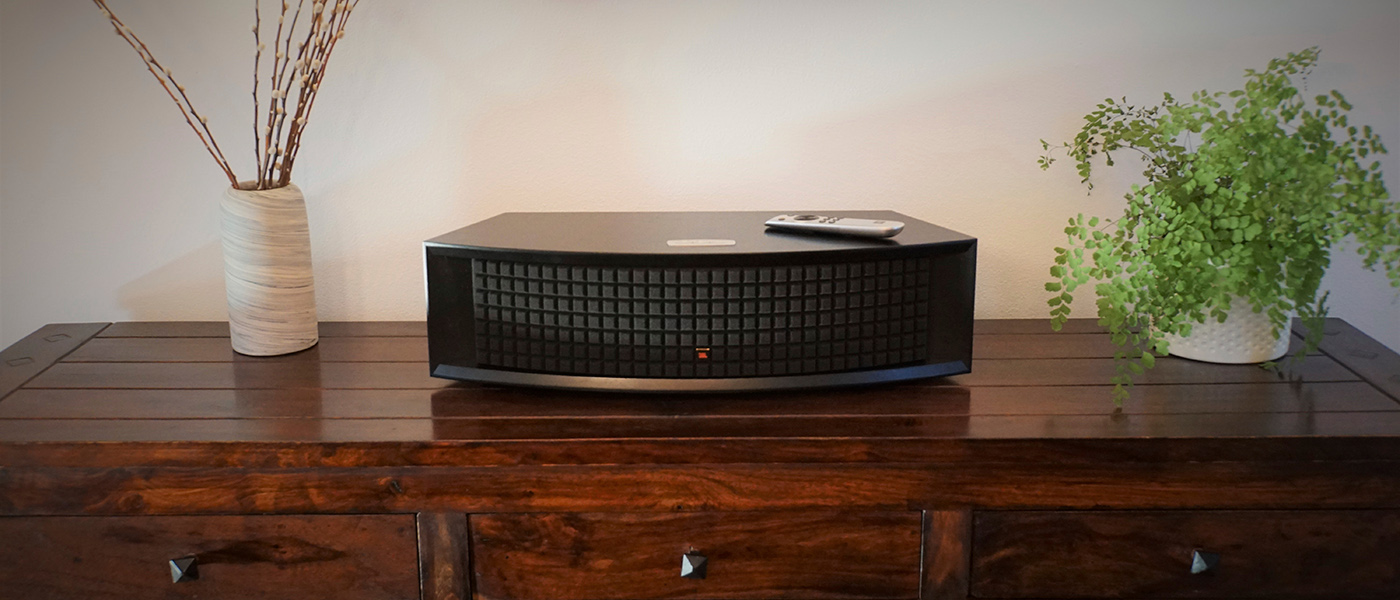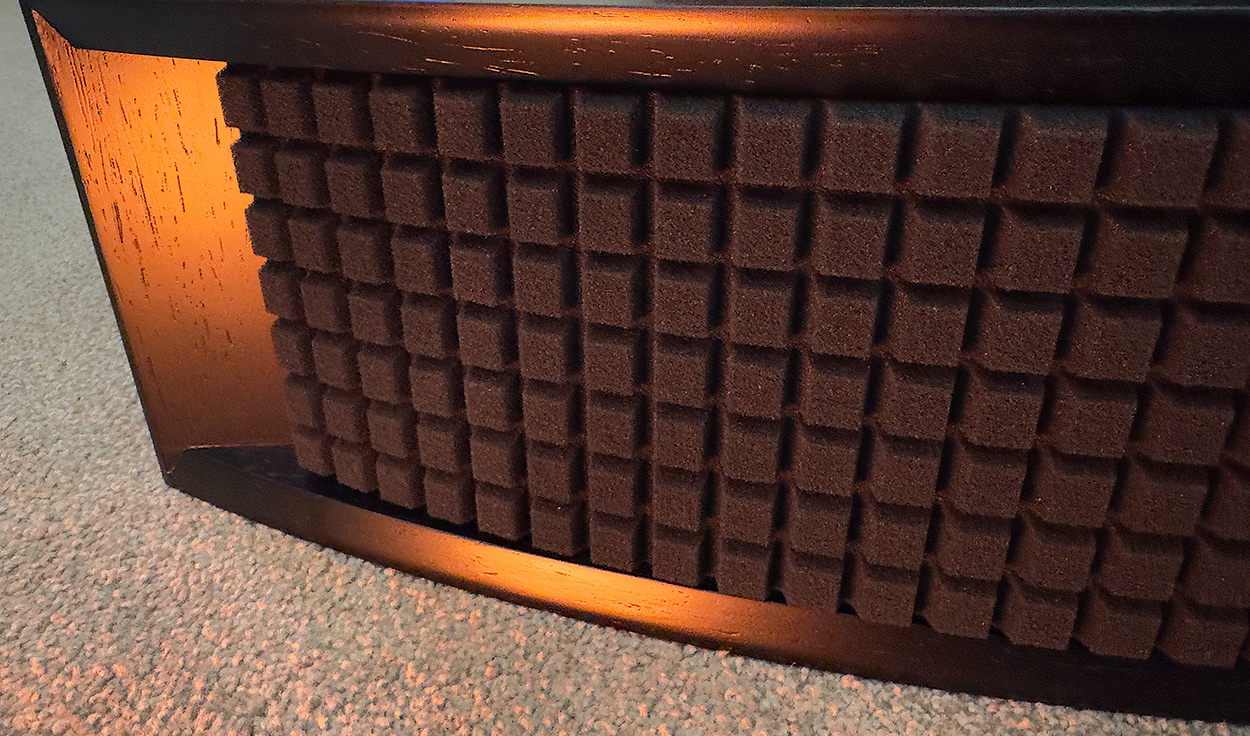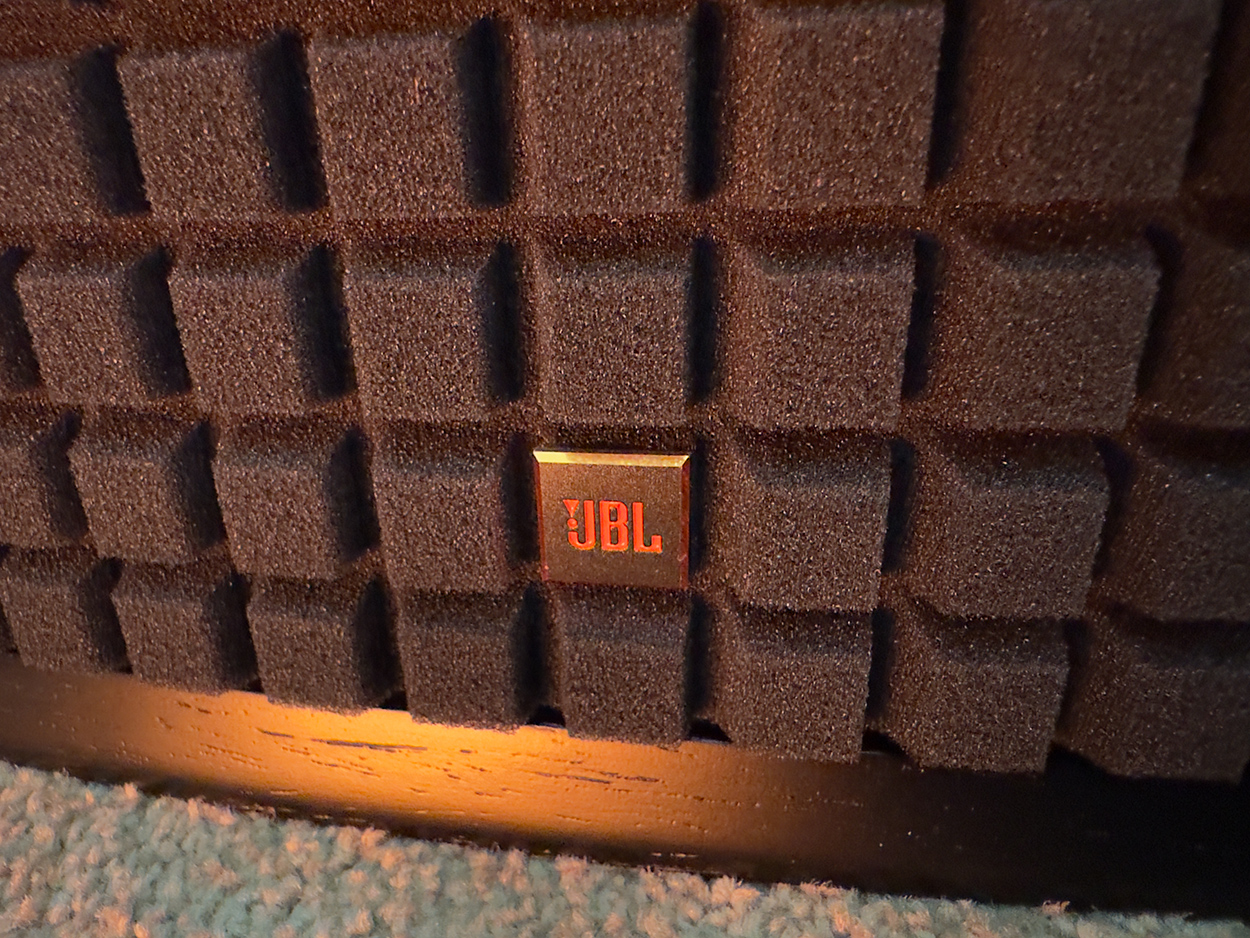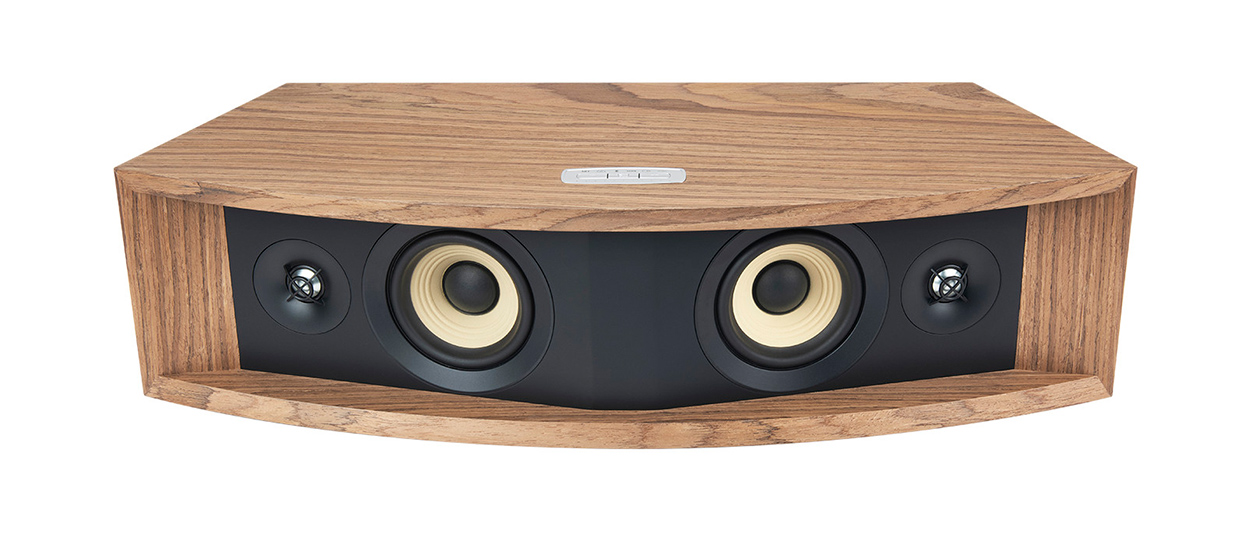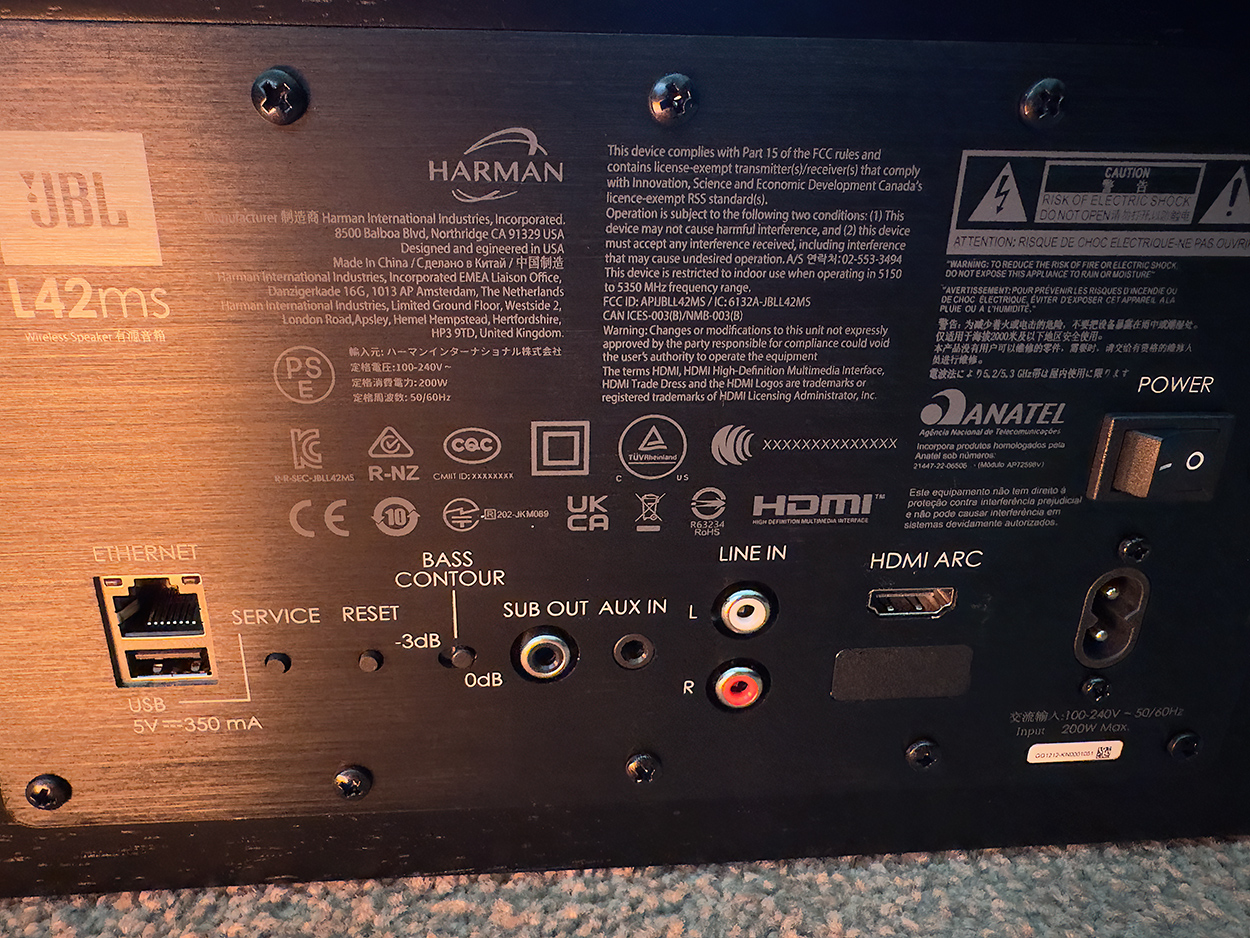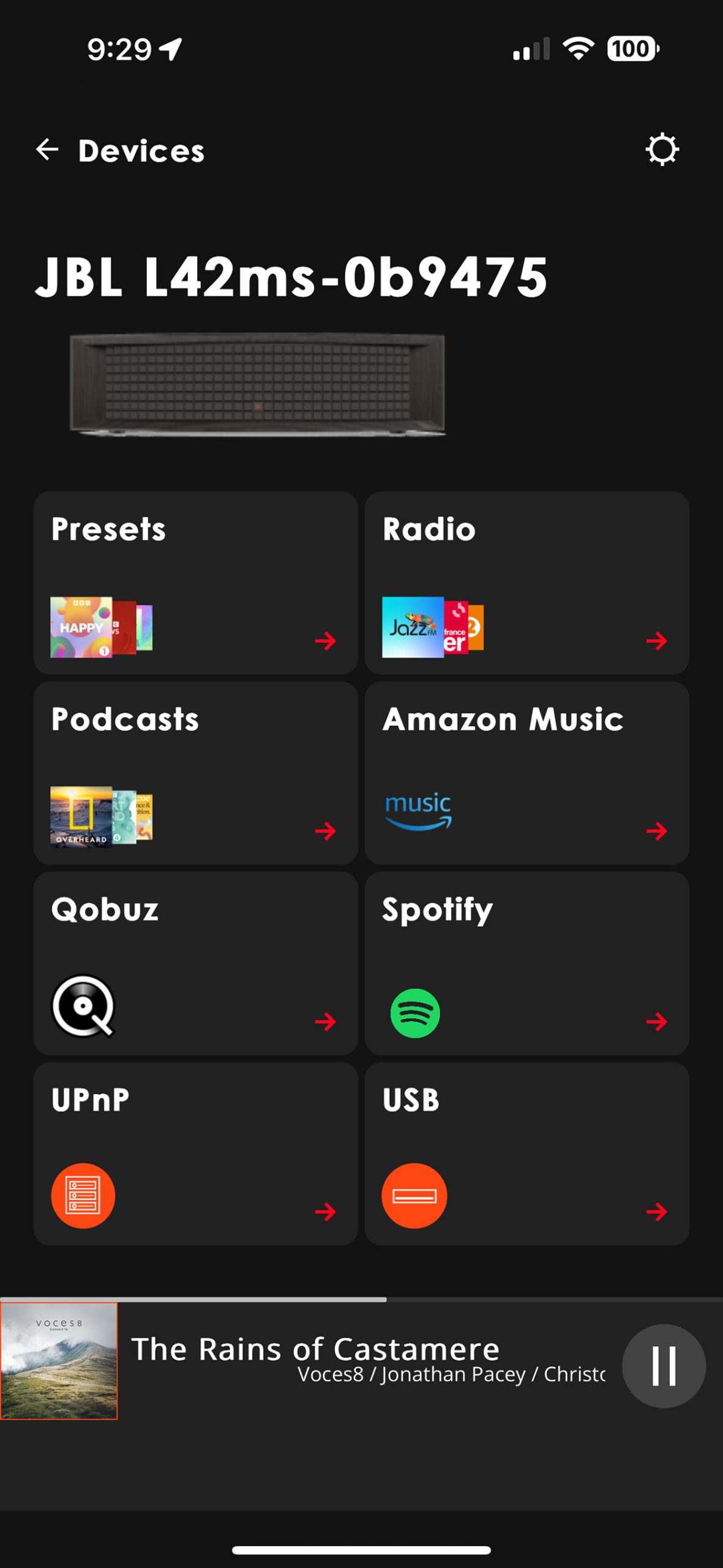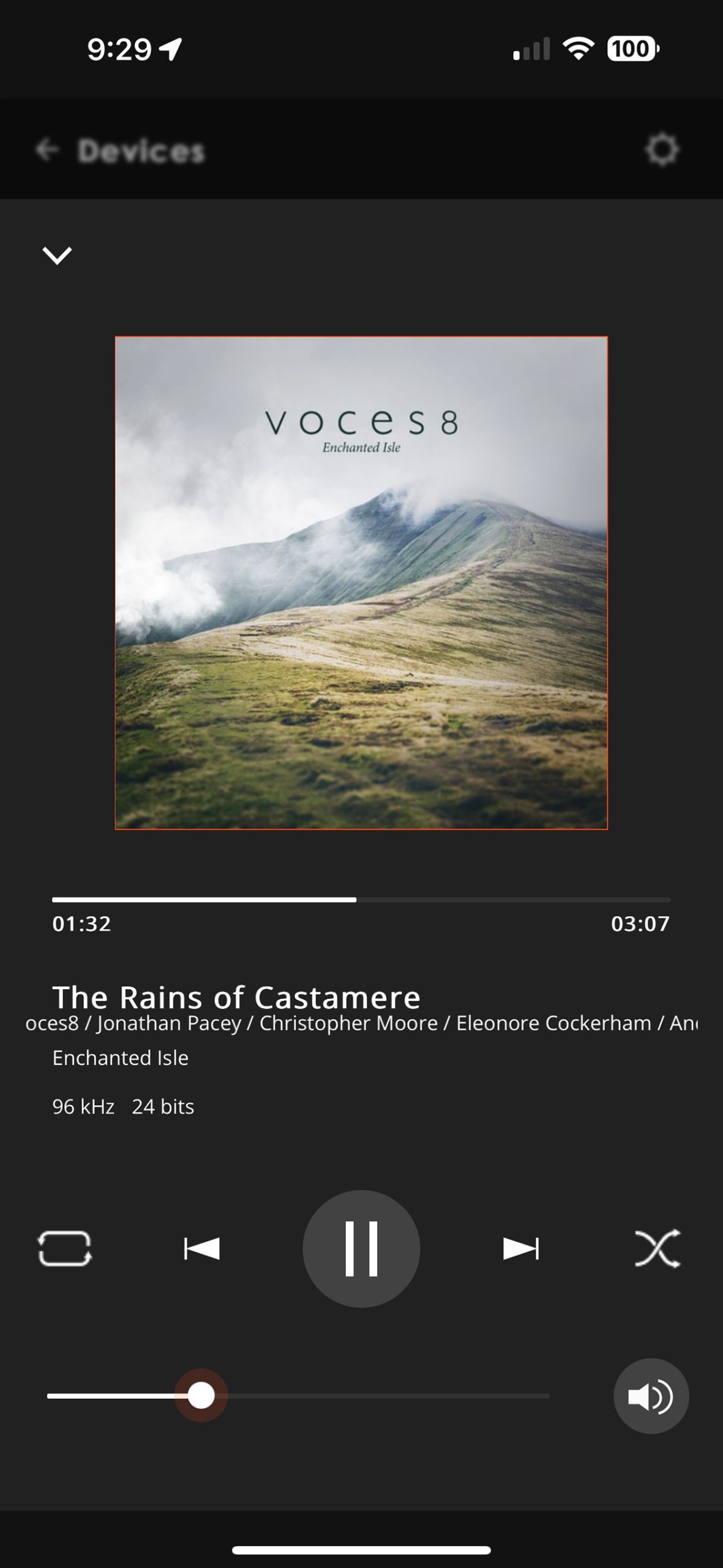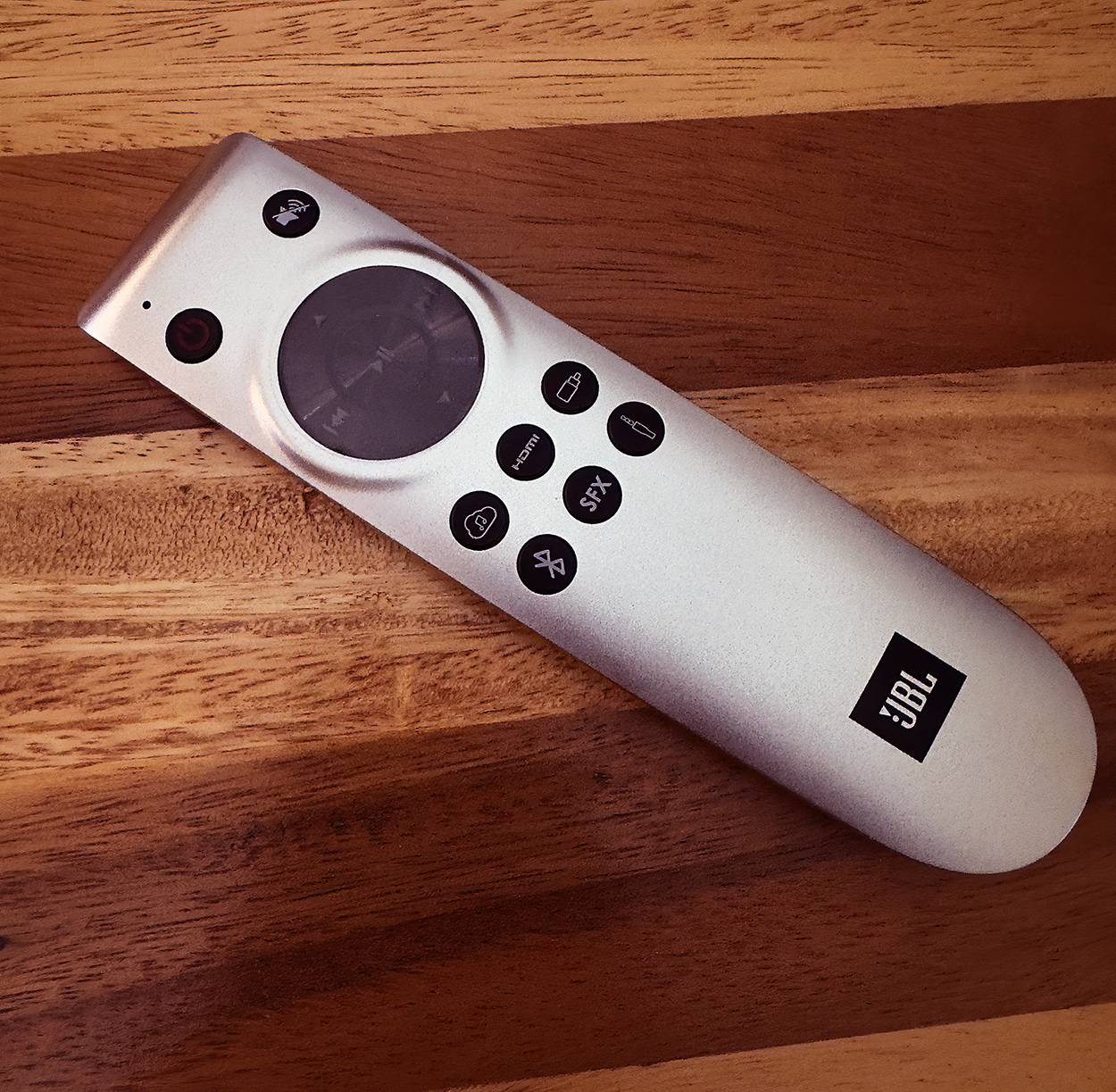My goal was to audition this compact system and see how it stacks up to other offerings in the thousand-dollar price range.
JBL has done something interesting here. The JBL L42ms can best be thought of as two bookshelf speakers lying horizontally in a box with amplifiers and electronics to support streaming. There are connections for network, Bluetooth, Google Chromecast, and Airplay2, with support for some streaming options built in. There are analog inputs and a subwoofer output, plus the L42ms has an HDMI connection for getting TV audio (stereo only).
While the unit sounded good, it would be improved with a subwoofer for users who want deep bass. JBL does offer one that is suitable for this unit (the JBL L10cs) there is no mention in any of the product literature or website of it being a suggested option. The Quick Start guide skips some important functionality, referring the user to the JBL website for the full manual which isn’t there.
A positive for the JBL L42ms is the integration of Roon which is an increasingly popular home music management and playback system.
JBL L42ms Integrated Music System
- Easy to get up and running.
- Very nicely crafted wood case.
- The speaker grille is attractive in the classic JBL style of blocked foam.
- Good connectivity overall.
- Roon Ready – a plus.
- Sound is quite good for the size of the unit, but not exemplary given the restrictive form factor.
- Subwoofer output (is needed to get the full potential of this product for deep bass mavens).
- The Quick Start guide has important omissions and suggests customers download a full manual which doesn’t exist yet.
The JBL L42ms is a nice-looking, room-friendly device that packs a lot of technology into something about the size of a soundbar.
JBL has a long history in HiFi, with James B. Lansing and a partner starting the company in 1927 to make speakers for radio consoles. The company went on to create high-quality speakers for theaters and is today owned by Harman International. The company now has portable speakers, and it has revived the JBL L-100 speaker, which was a popular high-end speaker in the 70s. I lusted after that speaker when I was in college, but it was out of my price range back then.
The L42ms is a good example of JBLs’ expanded thinking in enlarging their market footprint, offering high-quality systems in a compact package just right for a small living room, bedroom, or office. As a one-piece unit, it’s simple to set up and operate, yet it is very flexible.
Type:
Compact Integrated Music System
Low Frequency:
Dual 4-inch (100mm) Pure Pulp white cone woofers
High Frequency:
Dual 0.75-inch (20mm) Aluminum dome tweeters with waveguides
Amplifier Power:
200W RMS Class D Total System Power, 4-Channel Amplification with 75W RMS to each woofer + 25W RMS to each tweeter Configured for Stereo Reproduction
Frequency Response:
55Hz-25kHz (-6dB)
Crossover Frequency:
5kHz
Maximum SPL:
102dB @ 1m
Sound Controls:
Speaker placement boundary compensation
Subwoofer Output:
Autosensing w/ Auto-engage of 80Hz High Pass Filter
Connectivity
Wireless Inputs:
Wi-Fi streaming
Wired Inputs:
HDMI ARC
Supported Digital Audio Sample Rates (PCM 2CH):
Streaming
Bluetooth Audio:
Version 4.2 Profiles, SPP (Serial Port Profile), A2DP (Advanced Audio Distribution Profile), AVRCP (Audio/Vido Remote Control Profile)
Remote Control Type:
BTLE Wireless
Grille:
Black foam Quadrex grille
Enclosure:
Front-ported tabletop style cabinet available in black walnut or natural walnut furniture-grade wood veneer
Net Speaker Dimensions (H x W x D):
6.4” x 24.3″ x 9.2″ (162mm x 617mm x 234mm)
Net Product Weight:
26.3 lbs. (11.9kg)
Warranty:
5 years
AC Input Voltage:
100 – 240 VAC (+/-10%), 50/60Hz
Secrets Sponsor
At first glance, the JBL L42ms is a very attractive component. It comes in either black or natural walnut veneer, with a black foam ‘Quadrex’ grille, reminiscent of the grille on the iconic JBL L-100 speakers. This system will look good in any environment.
It looks like a soundbar for video, and while it can be used that way, it’s more like a super-sized table radio with far better sound. Using it for TV sound is somewhat limited, as it doesn’t support multi-channel audio, just stereo, although for some users, that will be fine.
The L42ms includes two 4″ woofers and two 3/4″ aluminum tweeters with a frequency response of 55 – 25,000 Hz (-6dB). The built-in amplifier offers 200 watts of total system power, giving 4-channel amplification with 75 watts to each woofer and 25 watts to each tweeter. The system also sports dual rear-firing bass ports, a selectable sound field expander, and bass contour controls which are slide switches on the rear panel.
The JBL L42ms comes in a sturdy box, along with a Quick Start manual, a remote control (batteries included), and a power cord. The manual is only 3 pages but will get you up and running easily. The system can be hooked to a wired network or connected to Wi-Fi. For this, you’ll need the free JBL app for either iOS or Android. The top plate of the L42ms has lights to show which function is running, but no LCD screen that allows inputs. So, you’ll have to use the app, for example, to enter your Wi-Fi credentials.
I hooked the JBL system up to my Wi-Fi and used the app to send some music from my iPhone to the L42ms once I paired it via Bluetooth, which was also easy and covered in the Quick Start guide.
The app also offers an almost endless list of streaming stations. You can select podcasts, and radio stations, and search by country, state, genre of music, etc. You can also save stations as favorites so you can easily recall them later. I thought this function was easy to use.
There are some oddities. The JBL app supports Qobuz, Spotify, and Amazon Music, but not Tidal. You can stream to the JBL directly from the Tidal app, but why not include it, as it is popular?
The app works well with Roon, displaying what is currently playing, and the resolution of the file selected.
Users will have to split their attention between the remote and the app. While the remote can control the volume and the input you want, it can’t select streaming stations. You’ll need the app for that. I feel the app is underdeveloped, and the remote needs more functionality. Hopefully, both will evolve.
There are some other odd choices. JBL advertises a sound field expansion feature, which is supposed to widen the apparent source of the sound. It’s not even mentioned in the user manual, and there’s a button marked SFX on the remote, but most users won’t know what it is for. Also, you can’t turn on SFX from the unit itself, so if you lose the remote you are out of luck. It also can’t be turned on from the JBL app.
In a large room, the JBL L42ms got a bit lost. It sounded like what it is, a stereo bookshelf system in a box with a well-matched amplifier.
In a smaller room, like a bedroom or an office, I liked the JBL system much, much more. While separation isn’t great, it rendered discernible stereo separation. The beefy amplifier never seemed to distort and sounded good on every type of music I sent to it. High frequencies were fine, as was the midrange. As the system only goes down to 55 Hz there really isn’t deep bass, but on much of the music I auditioned, bass was solid. There’s not a lot of music with really deep bass, but if you favor classical, some rock, and even jazz you may want a subwoofer to hear this system at its best.
I did set up a subwoofer attaching it to the built-in port on the back of the JBL and the sound was excellent all around. I used a KEF KC62, which matched well with the JBL, improved the low end, and left me with a quite good sound.
Since the JBL system doesn’t ship with a sub, I did all my listening without one other than a test to see if it worked and how my sub would match. I still thought the sound was quite good even without a subwoofer. I should point out that the JBL L42ms performed well against similar-sized bookshelf speakers, and the powerful amp gives it a lot of dynamic range.
I tried the sound field expansion feature on all the music I listened to. In most cases, it slightly enlarged the perception of the width of the speakers, which is a positive thing. On some vocals, I thought it muddled the image. When I turned it off, the imaging returned to normal.
Here’s what I listened to:
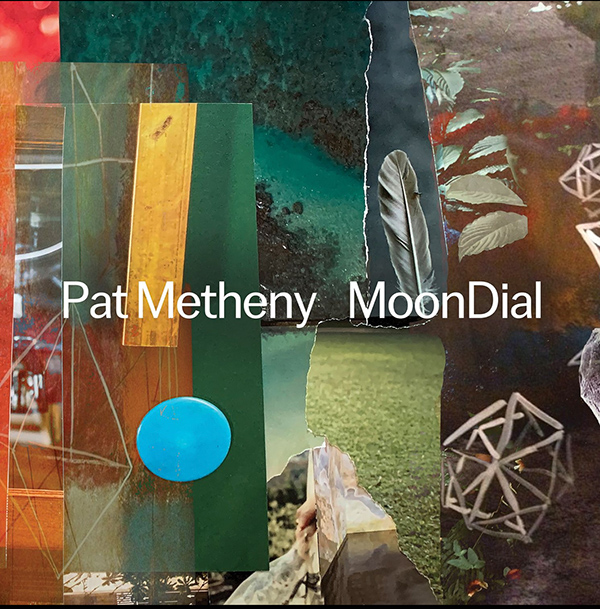
Pat Metheny, “MoonDial”
MoonDial – Pat Metheny: A joyful new album from the master of the acoustic guitar. This is a 96/24 digital file, that the JBL streamed from Tidal. It sounded very alive, with sparking highs. I couldn’t get the lowest bass notes from the guitar, but it still sounded great playing in my office. This track was a good demonstration of how good this integrated system can sound in the right environment with high-quality music.

Christopher Tin, Royal Philharmonic Orchestra with Voces8, “The Lost Birds (An Extinction Elegy)”
The Lost Birds (An Extinction Elegy) – Christopher Tin, Royal Philharmonic with Voces8: A lovely recording with a message. A musical piece about the extinction of the world’s birds, some caused by man, others by loss of habitat. A lovely work with the orchestra and chorus. The JBL sounded very nice here listening in my mid-sized office. The SFX feature enlarged the sound a bit, so it extended beyond the width of the speakers, and at a slight cost of imaging. I played this through Roon, and everything worked just fine in terms of Roon integration.
You can play, pause, and move among tracks right from the JBL app. If you’d like more flexibility to create playlists just use the Roon app.
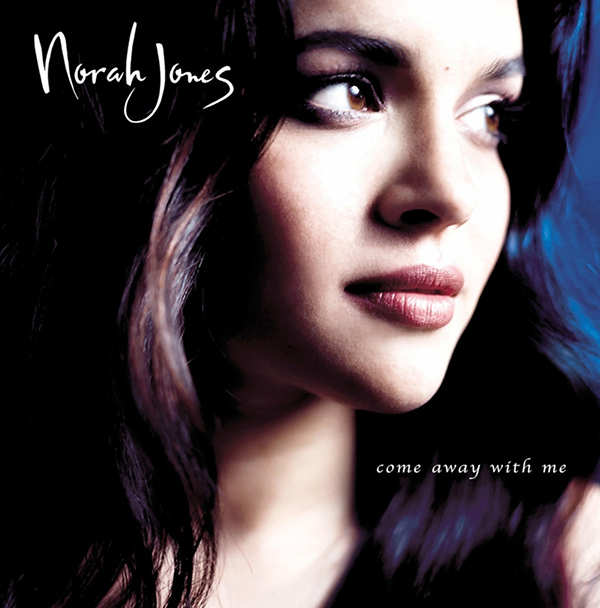
Norah Jones, “Come Away with Me”
Come Away with Me – Nora Jones: Her best album on Blue Note, still packs a punch. These speakers did a nice job with Jones’ voice and her acoustic accompaniment. It was a nice, positive test of this system.
Secrets Sponsor
At $1000 there’s a lot here. Two JBL speakers, a 200-watt-per-channel Class D amplifier, generous inputs and outputs (including one for that desirable subwoofer) and it’s a good value. If you are willing to put together a system on your own, that will have separate speakers and amps, you could get better sound in my view, but not the convenience or slick integration.
- Nicely built, good electronics and drivers.
- Sound is good for a one-box solution, but the stereo image is a bit compromised by its physical limitations.
- Plenty of connectivity, wireless and wired
- Powerful amplifier, something that is usually not good in a one-piece system.
- Rewrite the Quick Start guide. It’s incomplete and fails to even mention some features like SFX.
- There should be an optional subwoofer package offered by JBL. The company has some nice ones to sell; should be easy to offer the option.
- The remote lacks features, as does the JBL app. For full use of this system, you’ll likely need both.
To be frank, give me $1000 and I can put together a better-sounding system. I’d use perhaps some speakers from Klipsch or Polk, or maybe one of the Andrew Jones designs. And I’d choose a good integrated amplifier, of which there are many. But it wouldn’t have the built-in streaming capability, wouldn’t be as simple to set up, and wouldn’t be in one piece ready to plunk down in any room you’d want it. If you’re looking for a well-built system that is easy to get running and keep running the JBL L42ms should be on your list to consider.
Still, I’m troubled by the sloppy execution of the product, such as no mention in the guide of the sound field expansion feature and what it is supposed to do, an app that still requires the physical remote for some things, and a physical remote that requires the app to get full functionality. These are easy fixes for JBL, and I hope they will consider some updates to the device and the documentation.




